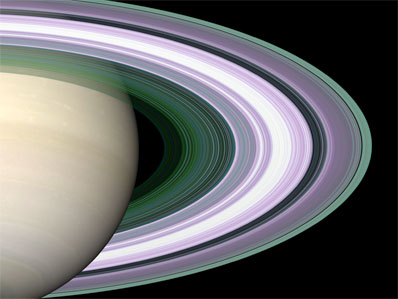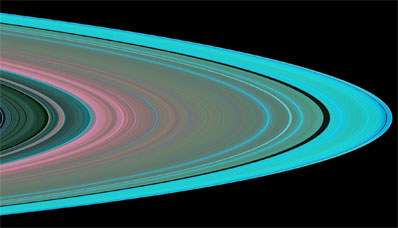
Spaceflight Now +

|

|

|

|

Premium video content for our Spaceflight Now Plus subscribers.

Mike Griffin at KSC
 NASA Administrator Mike Griffin and Kennedy Space Center Director Jim Kennedy chat with reporters at the Cape on a wide range of topics. The press event was held during Griffin's tour of the spaceport. (27min 48sec file) NASA Administrator Mike Griffin and Kennedy Space Center Director Jim Kennedy chat with reporters at the Cape on a wide range of topics. The press event was held during Griffin's tour of the spaceport. (27min 48sec file)
 Play video Play video

Delta rocket blasts off
 The NOAA-N weather satellite is launched aboard a Boeing Delta 2 rocket from Vandenberg Air Force Base, California. The NOAA-N weather satellite is launched aboard a Boeing Delta 2 rocket from Vandenberg Air Force Base, California.

 Play video: Play video:
Liftoff | Extended clip
Umbilicals | IR tracker

NOAA pre-launch
 Officials from NASA, NOAA, the Air Force and Boeing hold the pre-launch news conference at Vandenberg Air Force Base to preview the mission of a Delta 2 rocket and the NOAA-N weather satellite. (29min 54sec file) Officials from NASA, NOAA, the Air Force and Boeing hold the pre-launch news conference at Vandenberg Air Force Base to preview the mission of a Delta 2 rocket and the NOAA-N weather satellite. (29min 54sec file)

 Play video: Play video:
Dial-up | Broadband

Shuttle test count
 Watch shuttle Discovery's countdown dress rehearsal that ends with a simulated main engine shutdown and post-abort safing practice. (13min 19sec file) Watch shuttle Discovery's countdown dress rehearsal that ends with a simulated main engine shutdown and post-abort safing practice. (13min 19sec file)
 Play video Play video

Training at KSC
 As part of their training at Kennedy Space Center, the Discovery astronauts learn to drive an armored tank that would be used to escape the launch pad and receive briefings on the escape baskets on the pad 39B tower. (5min 19sec file) As part of their training at Kennedy Space Center, the Discovery astronauts learn to drive an armored tank that would be used to escape the launch pad and receive briefings on the escape baskets on the pad 39B tower. (5min 19sec file)
 Play video Play video

Discovery's crew
 Shuttle Discovery's astronauts pause their training at launch pad 39B to hold an informal news conference near the emergency evacuation bunker. (26min 11sec file) Shuttle Discovery's astronauts pause their training at launch pad 39B to hold an informal news conference near the emergency evacuation bunker. (26min 11sec file)

 Play video: Play video:
Dial-up | Broadband

Astronaut Hall of Fame
 The 2005 class of Gordon Fullerton, Joe Allen and Bruce McCandless is inducted into the U.S. Astronaut Hall of Fame at the Saturn 5 Center on April 30. (1hr 24min 55sec file) The 2005 class of Gordon Fullerton, Joe Allen and Bruce McCandless is inducted into the U.S. Astronaut Hall of Fame at the Saturn 5 Center on April 30. (1hr 24min 55sec file)
 Play video Play video

'Salute to Titan'
 This video by Lockheed Martin relives the storied history of the Titan rocket family over the past five decades. (4min 21sec file) This video by Lockheed Martin relives the storied history of the Titan rocket family over the past five decades. (4min 21sec file)
 Play video Play video

Titan history
 Footage from that various Titan rocket launches from the 1950s to today is compiled into this movie. (6min 52sec file) Footage from that various Titan rocket launches from the 1950s to today is compiled into this movie. (6min 52sec file)
 Play video Play video

 Become a subscriber Become a subscriber
 More video More video

|

|

|

|
|

|

Radio signals decipher structure of Saturn's rings
UNIVERSITY OF ARIZONA NEWS RELEASE
Posted: May 23, 2005
The Cassini spacecraft has obtained the most detailed look ever at Saturn's rings, including the B ring, which has eluded previous robotic explorers. Its structure seems remarkably different from its two neighbors, rings A and C.

This simulated image was constructed from the measured optical depth profiles. It depicts the observed ring structure at about 10 kilometers (6 miles) in resolution. Color is used to represent information about ring particle sizes in different regions based on the measured effects of the three radio signals. Purple color indicates regions where there is a lack of particles of size less than 5 centimeters (about 2 inches). Green and blue shades indicate regions where there are particles smaller than 5 centimeters (2 inches) and 1 centimeter (less than one third of one inch). Credit: NASA/JPL
Download larger image version here
|
The origin of Saturn's rings is a mystery. The rings are an enormous, complex structure. From edge to edge, the ring system would not even fit in the distance between Earth and the moon. The seven main rings are labeled in the order they were discovered. From the planet outward, they are D, C, B, A, F, G and E.
During a recent radio experiment, Cassini mapped this structure with clarity never before available. This is the first of many such observations Cassini will be conducting over the summer.
"The structure of those remarkable rings is a sight to behold. All ring features appear to be populated by a broad range of particle sizes that extend to many meters in diameter at the upper end," said Dr. Essam Marouf, Cassini radio science team member and professor of electrical engineering, San Jose State University, San Jose, Calif.
Marouf said, at the lower end, particles of about 5 centimeters (roughly 2 inches) in diameter or less seem to be scarce in ring B and inner ring A. In ring C and outer ring A, particles of less than about 5 centimeters (2 inches) in diameter seem to be abundant.
Cassini found that the inner and outer parts of ring B contain rings that are hundreds of kilometers wide (hundreds of miles) and vary greatly in the amount of material they contain. A thick, 5,000-kilometer-wide (3,100-mile) core contains several bands with ring material nearly four times as dense as that of ring A, and nearly 20 times as dense as that of ring C.
The dramatically varying structure of ring B is in sharp contrast to the relatively flat structure of ring A or the gentle, wavy structure of ring C, where many dense, narrow and sharp-edged ringlets permeate its outer part.

This image compares the structure of Saturn's rings observed by two approaches. The upper half is a natural color mosaic of images by the Cassini narrow-angle camera. The bottom simulated images is constructed from a radio occultation observation conducted on May 3, 2005. Color in the lower image is used to represent information about ring particle sizes. Credit: NASA/JPL
Download larger image version here
|
Cassini also detected more than 40 wavy features called "density waves" in ring A, many near its outer region, close to the moons orbiting just outside the ring. The density wave observations will tell more about the ring surface mass density, its vertical thickness and other physical properties.
"A marvelous array of waves, caused by gravitational interactions with nearby moons, has been uncovered throughout ring A. We also see a major density wave in the dense ring B. Some of these waves have been seen in Voyager and other Cassini observations, but not in this large number and not with this exceptional clarity," said Marouf.
Cassini conducted this first radio occultation observation of Saturn's rings, atmosphere and ionosphere on May 3, 2005. An occultation means that, if someone were to watch Cassini from Earth, Cassini would appear occulted, or hidden, behind the rings. During a radio occultation, Cassini sends a radio signal from the spacecraft through the rings to Earth. Scientists then watch how the strength of the radio signal is affected as the signal passes through ring material. The denser a ring is, the weaker the signal received. The experiment helps scientists map the distribution of the amount of ring material and determine the ring particle sizes.

Note the gradual increase in shades of green towards the outer edge of ring A. It indicates gradual increase in the abundance of 5-centimeter (2-inch) and smaller particles. Note also the blue shades in the vicinity of the Keeler gap (the narrow dark band near the edge of ring A). They indicate increased abundance of even smaller particles of diameter less than a centimeter. Frequent collisions between large ring particles in this dynamically active region likely fragment the larger particles into more numerous smaller ones. Credit: NASA/JPL
Download larger image version here
|
The occultation was the first ever to use three radio signals of different frequencies (called Ka, X and S) transmitted simultaneously from a spacecraft to Earth-receiving stations of NASA's Deep Space Network. Ring particles of different sizes affect each frequency differently.
The Cassini tour was designed specifically to optimize the geometry of the first radio occultation experiment and seven other occultations scheduled from May to September 2005. These observations are at the heart of Cassini's fundamental science objectives of characterizing and understanding Saturn and its ring system. During its lifetime, Cassini will obtain 20 radio occultations and 80 stellar occultations, providing far more detailed knowledge of the ring structures.
The Cassini-Huygens mission is a cooperative project of NASA, the European Space Agency and the Italian Space Agency. The Jet Propulsion Laboratory, Pasadena, Calif., manages the mission for NASA's Science Mission Directorate, Washington.
|

|

|

|

|



